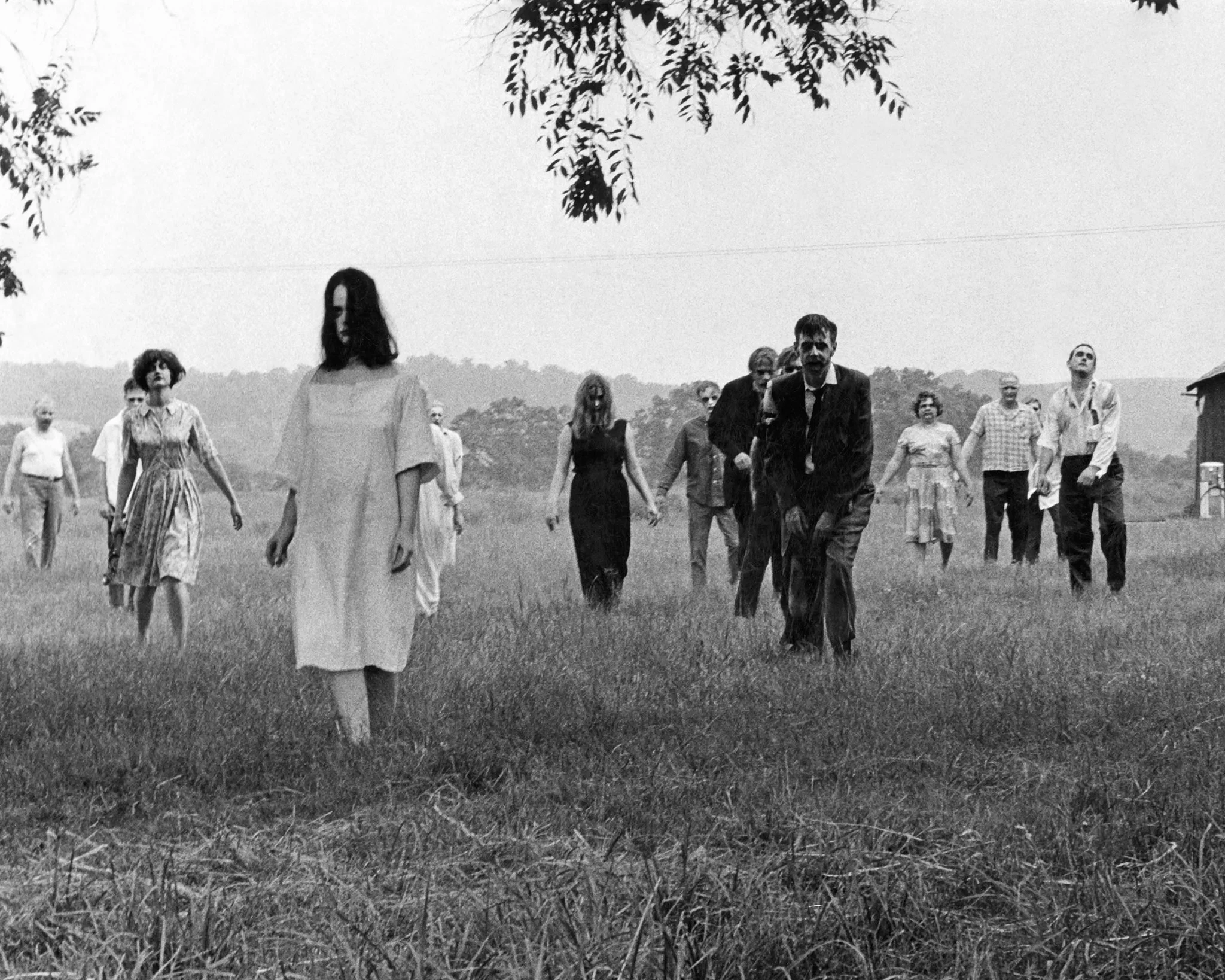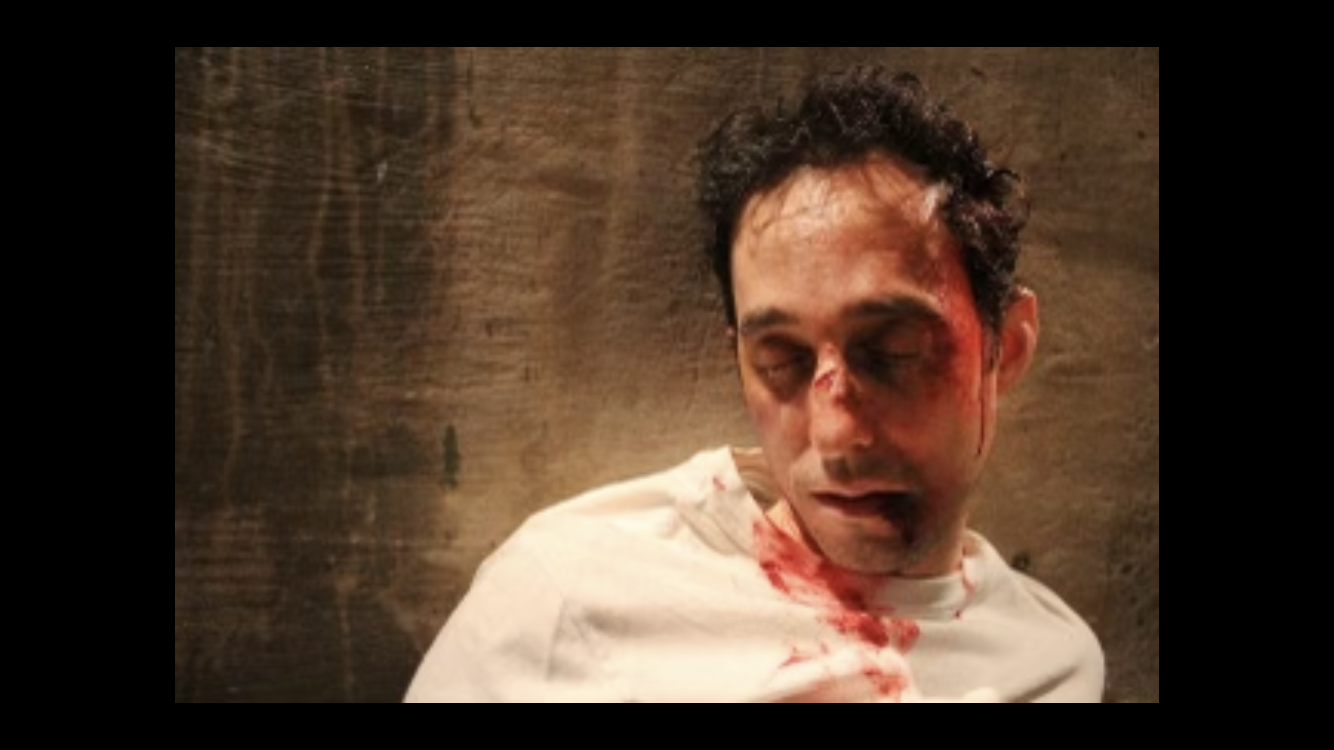Romero Remaking Romero; or, The Second Night of the Living Dead
by Greg Beckett
On October 1, 1968, a small, independent horror film called The Night of the Living Dead premiered in Pittsburgh. It’s hard to overstate the impact the film would have on American cinema. Directed by George A. Romero and cowritten by Romero and John Russo, the film ushered in a new aesthetic and style that would influence generations of horror films to come. Made on a shoestring budget of about $100,000, it has gone on to become one of the most profitable films of all time, grossing more than 250 times its cost. It is still routinely shown at late-night screenings, although the film is also in the public domain and widely available free online. The film is also synonymous with a new level of serious—and seriously scary—horror films. Released just before the new film rating system was established, the film stunned audiences who came expecting a funny and entertaining film. Instead, they were treated to images of the “living dead” eating what looks like human flesh and a daughter who turns into a monster and kills her parents. The film’s ending flouted convention too, as—spoiler alert—none of the main characters survive.
Still from “Night of the Living Dead”
Night of the Living Dead gave birth to the modern American zombie film (although the word zombie never appears in it). It influenced countless subsequent films, inspired several unofficial remakes and copies, and was the first part of Romero’s famed trilogy that includes Dawn of the Dead (1978) and Day of the Dead (1985). (In the 2000s, Romero added three additional films to that series, all existing in the same universe, although none of them directly connected by characters or major plotlines other than a zombie apocalypse.) There has also been one official remake—the 1990 version written by Romero and produced by Russo but directed by renowned makeup and special effects artist Tom Savini, who had worked with Romero on Dawn of the Dead and Day of the Dead. Given that Romero had already gone on to make two sequels, why did he feel the need to remake Night?
In the world of horror cinema, there have been some truly notable remakes, perhaps foremost among them John Carpenter’s 1982 version of The Thing, which was a remake of the 1951 film The Thing from Another World. (Both films are based on John W. Campbell’s 1938 novella Who Goes There?) Yet, it seemed an odd choice for Romero to remake Night of the Living Dead, since the film is so beloved by fans and remains in circulation even today. Indeed, the remake’s reception at the time of its release was not exactly warm, with some accusing Romero of just doing it for the money. But who could fault him for that, since the original film had fallen into public domain, and he had no way to restore copyright? (Re-establishing copyright is, in fact, one of the reasons films are frequently remade or rebooted.)
Yet, I think there is something important about Romero’s 1990 version, but to see it we need to consider what he changed from the original. For starters, the remake is shot in color and had a significantly larger budget, much of which went to production costs, including special effects. Several scenes had to be cut to avoid the film receiving an X rating, and it is considerably more violent and gory than the original—although I would suggest the original remains scarier precisely because its lower budget required using creative ways to build tension, set atmosphere, and suggest without showing fully what is happening. Beyond the zombie gore there is one change that stands out above all others: the total rewriting of the character Barbara, or Barbra as she is listed in the 1968 original. (Is the slight change in spelling just an editorial correction, or a nod to the changes in the character, too?)
Still from “Night of the Living Dead”
Night of the Living Dead has always been a controversial film, but this is only partly due to the horror elements. Romero can be considered as part of the new generation of socially conscious filmmakers, who used the horror genre to tell stories that were not only scary and entertaining but also included commentary and critique about major social issues. In the 1968 original, the lead character, Ben (played by Duane Jones) is a Black man who, in stark contrast to genre conventions, is not only a main character but is also the only one to have a sensible plan for everyone’s survival. Ben is also the only one to survive the long night of the zombie attack, although—also controversially—he is killed in the morning by a roving band of armed white men who have been conscripted by the sheriff to patrol the area and shoot the remaining zombies (giving us the “shoot them in the head” trope). Ben also slaps Barbra, a young white woman, in a pivotal scene in the film, adding to the shock felt by the audience. Romero has always said that he did not specifically write Ben as Black, but that Jones was simply the best actor for the role, although his subsequent zombie films all feature significant commentary on race and significant roles for Black and Hispanic actors.
Perhaps one of the most controversial aspects of the film, at least among critics, has been the character of Barbra/Barbara (played by Judith O’Dea in 1968 and by Patricia Tallman in 1990). In terms of the audience’s introduction to the story, Barbra is the central figure, but in terms of the plot and action, she is constantly relegated to secondary roles and is, for a large portion of the middle of the film, even reduced to either screaming hysterically or to laying nearly catatonic on the couch. Her almost total lack of agency has led some to criticize Romero for his portrayal of women, and the remake focuses most of its attention on rewriting her story. The new Barbara is coded as a strong female figure in multiple ways, from her style (short haircut and pants) to her ability to regain her composure quite quickly after the initial zombie attacks. She is key to the action of the plot, and she can use a gun effectively. She even makes it to the end of the film (another major change from the original) and after surviving the zombie onslaught proceeds to shoot the only other survivor of the night, the cowardly Mr. Cooper, who selfishly hid in the attic and barricaded the door so no one else could get in. She shoots Ben, too, who in the remake has been turned into a zombie, a small act of mercy that contrasts with the gleeful shooting of the zombies that Barbara (and the audience with her) witnesses the sheriff’s posse partaking in as the film finishes.
Still from “Night of the Living Dead”
The new Barbara fits much better with Romero’s other films, but it is still curious that he felt the need to correct the original. I think the criticisms of Barbra, while valid, go a bit too far. She does, after all, save herself from the initial zombie attack that begins the film, and she makes it to the farmhouse where she helps Ben begin to set up for their collective survival. Her screaming and eventual catatonic state could be partially explained by the fact that she watched her brother get killed just hours earlier. And she does eventually rise to action and help defend the farmhouse from the zombies, even though she dies in that effort (at the hands of her own zombie brother). Romero had already made great strides in writing female leads in the two subsequent films in his zombie series. Both Dawn of the Dead and Day of the Dead have strong female leads who are key to the action of the plot and survive at the end of the films. In Dawn, Fran points out that the male characters are treating her as less capable and she demands to be taught how to use a gun, while in Day, Dr. Sarah Bowman is the only character who has any sense of purpose or rationality left, as her male scientist colleague has begun to deliberately turn people into zombies as part of his own experiments on controlling them, and the soldiers (including her lover) she is stationed with have all become reduced to violence, in-fighting, and paranoia. Indeed, all three films have a strong critique of male violence within the narratives, and the theme grows stronger and more explicit with each film—it is implicit and left to the viewer in Night, then increasingly voiced and staged directly in each subsequent entry in the series. In that sense, the remake returns us to the beginning, and allows the new Barbara to give voice to that trajectory, letting her not only survive but also giving her a way to comment directly on the male violence of the sheriff’s posse, which she likens to the indiscriminate violence of the zombies, saying, in a bit of dialogue that names Romero’s touchstone theme: “They’re us. We’re them and they’re us.”
Photo and makeup by Jessi T Walsh
If Romero’s zombies are meant to be a distorted version of the violence of our own society, a Freudian “return of the repressed”—the remaking of the film and the rewriting of Barbara—offers Romero a second chance to tell us what he has been trying to say all along: the zombies aren’t the only monsters in the film.



